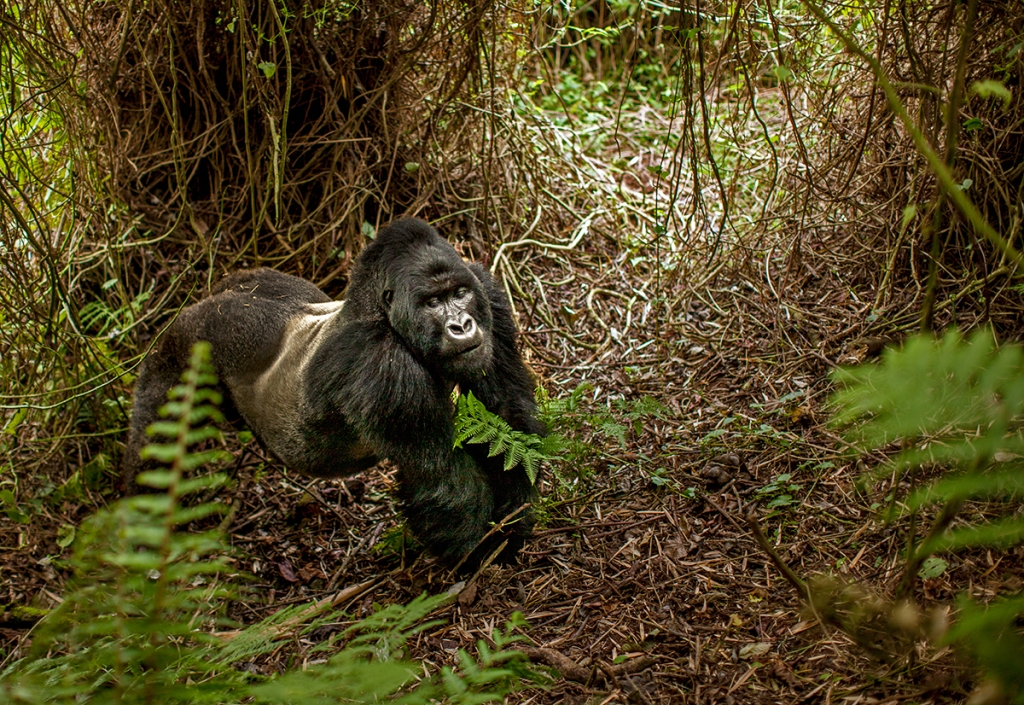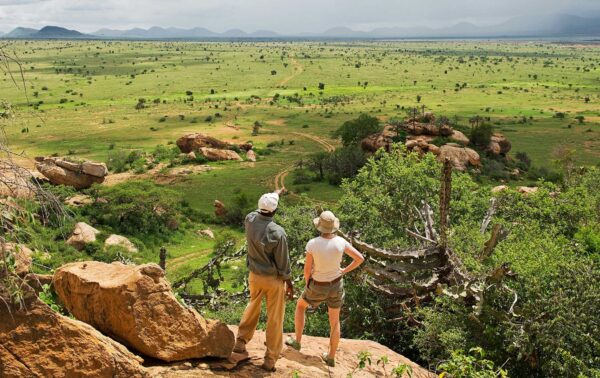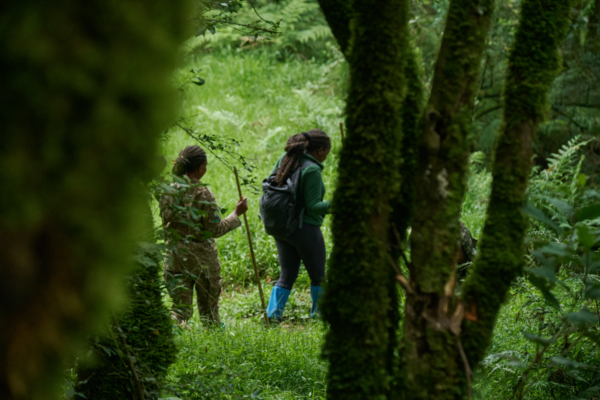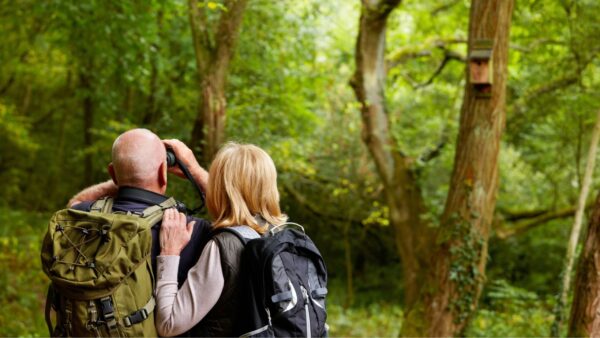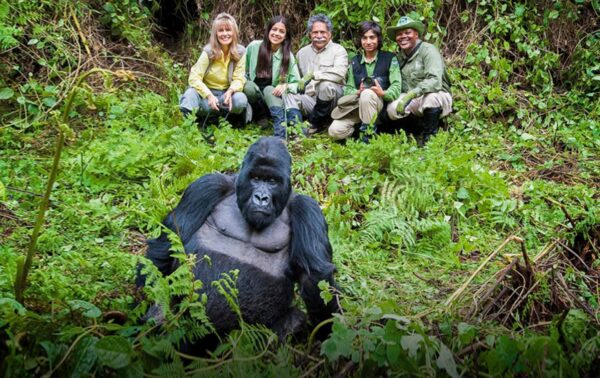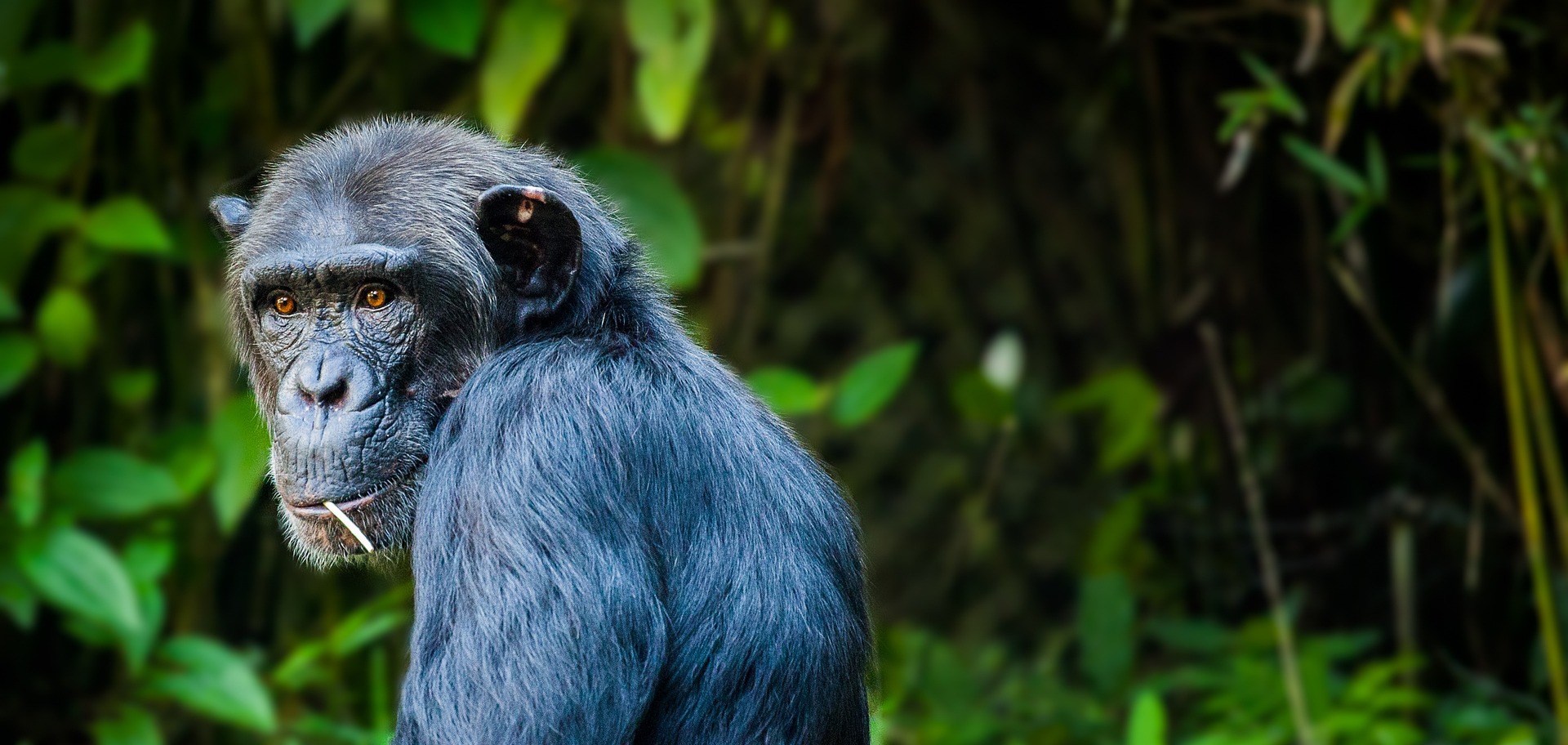
How Do I Get a Gorilla Trekking Permit, and How Much Does It Cost?
July 4, 2025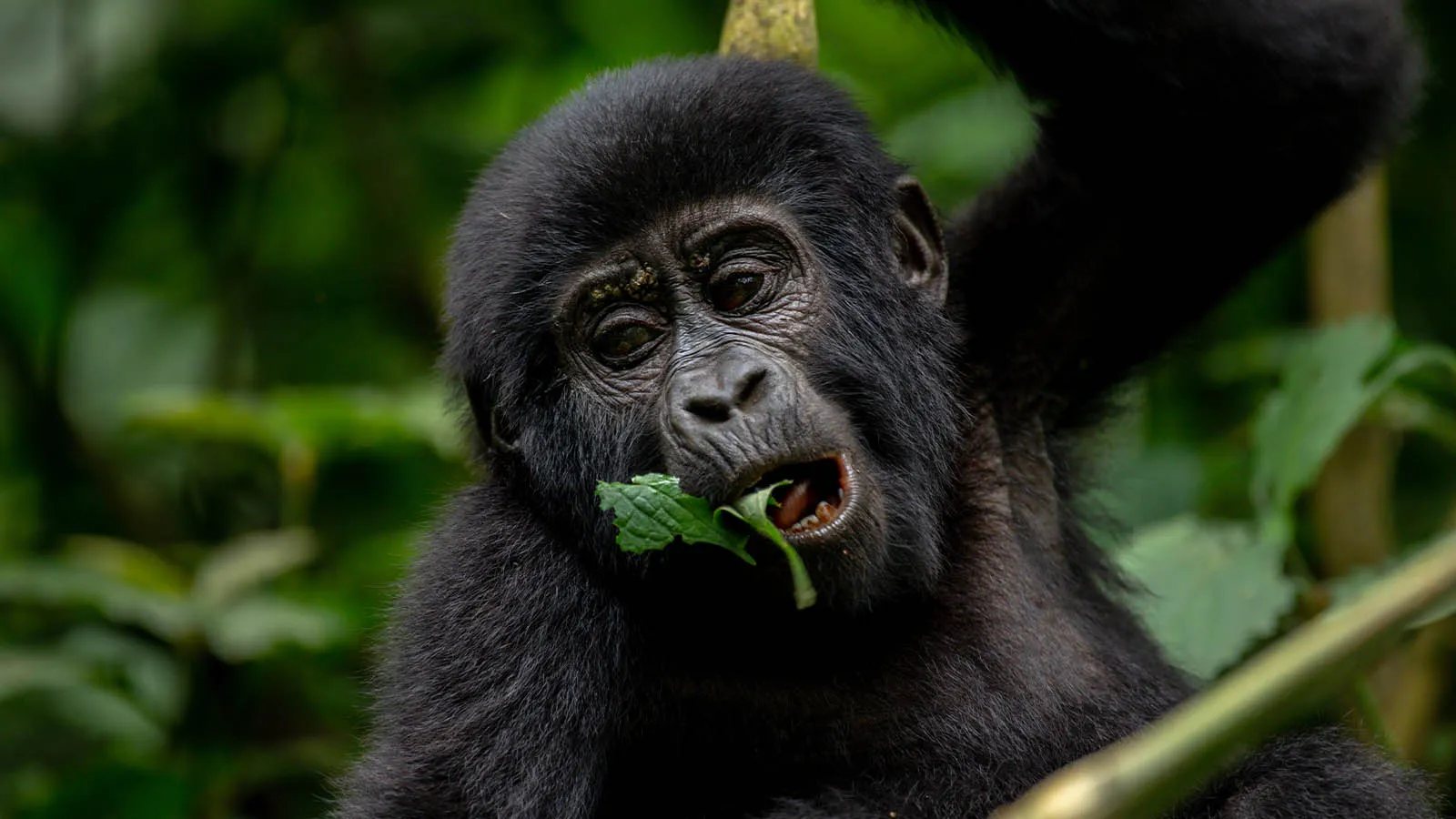
What type of animals will I see on a game drive in Uganda?
July 4, 2025What Fitness Level Is Required for Gorilla Trekking?
What fitness level is required for gorilla trekking? This is one of the most crucial questions travelers ask when preparing for an unforgettable Uganda safari or Rwanda safari. Gorilla trekking is a once-in-a-lifetime wildlife experience that allows you to witness endangered mountain gorillas in their natural habitat—deep within the lush rainforests of East Africa. But while the rewards are great, the journey to reach them can be physically demanding.
Renowned locations such as Bwindi Impenetrable National Park and Mgahinga Gorilla National Park in Uganda, as well as Volcanoes National Park in Rwanda, offer guided gorilla trekking expeditions that bring you face-to-face with one of the world’s most majestic creatures. However, this immersive wilderness adventure often involves hiking through rugged terrain, steep slopes, dense vegetation, and sometimes muddy trails, depending on the season.
Understanding what fitness level is required for gorilla trekking helps you prepare mentally and physically. Whether you’re interested in Gorilla Trekking Rwanda, Uganda Gorilla Trekking, or combining your trek with other exciting experiences like Murchison Falls safaris, chimpanzee tracking, or community-based cultural tours, being physically ready enhances your comfort, enjoyment, and safety.
In this comprehensive guide by Renai Safaris, we’ll discuss the level of fitness needed for gorilla trekking, how to train for it, options for different fitness levels, and how to pair your trek with other enriching experiences during your wildlife safari in East Africa.
Terrain Challenges: Understanding the Physical Demands of Gorilla Trekking
Hiking in the Heart of the Jungle
When asking, what fitness level is required for gorilla trekking?, it’s essential to understand the nature of the environment you’ll be entering. Gorilla trekking typically takes place in mountainous and thick forest regions. The trails are unpaved, often slippery, and can be quite steep. In Uganda’s Bwindi Impenetrable Forest, for instance, trekking routes may involve navigating through dense undergrowth, crossing streams, and ascending or descending hills with minimal infrastructure.
The actual trekking duration varies based on the gorilla family’s location that day—it can last anywhere from 1 to 8 hours (including the return journey). Trekkers can expect to cover uneven terrain, at times needing to use walking sticks or the assistance of porters for support.
While this might sound daunting, the beauty of the landscape and the anticipation of meeting a mountain gorilla family keep most trekkers motivated. That said, a moderate level of physical fitness is strongly recommended. You don’t need to be an athlete, but you should be capable of walking several hours, uphill and downhill, without excessive fatigue.
For travelers with mobility issues or lower fitness levels, Renai Safaris can arrange a sedan chair service (carried by porters), particularly in Uganda Gorilla Trekking destinations, ensuring that no one misses out on the experience due to physical limitations.
Whether you’re combining this with chimpanzee tracking in Kibale Forest or a relaxed game drive in Murchison Falls National Park, knowing what fitness level is required for gorilla trekking allows you to better prepare and personalize your safari experience.
Preparing for Your Trek: How to Get Fit for Gorilla Trekking
Training Tips for Travelers
So, what fitness level is required for gorilla trekking, and how do you get there? A solid foundation in cardiovascular fitness and leg strength will go a long way in ensuring a comfortable trek. You can begin preparing several weeks—or ideally months—in advance by incorporating a few key practices into your routine:
- Hiking or walking regularly: Aim for 3–5 walks per week, gradually increasing your distance and elevation gain.
- Leg workouts: Squats, lunges, and stair climbing help prepare your muscles for uphill hikes.
- Cardio exercises: Swimming, cycling, jogging, or brisk walking improve heart health and endurance.
- Practice with a backpack: Trekking with a small pack simulates actual trekking conditions.
Altitude can be a factor, especially in Gorilla Trekking Rwanda, where treks start at higher elevations. Training in hilly areas or using a stair machine can help your body adjust to climbing at altitude.
Our expert team at Renai Safaris can tailor your trekking pace to suit your fitness level. We also recommend staying hydrated, eating balanced meals, and wearing appropriate hiking boots and layered clothing during your trek.
When planning a full Uganda safari itinerary that includes gorilla trekking, wildlife safaris, and cultural excursions, maintaining your fitness ensures that you enjoy each moment to the fullest without unnecessary strain.
Fitness vs. Accessibility: Options for Different Traveler Types
Trekking Options for All Abilities
If you’re worried about what fitness level is required for gorilla trekking, don’t let that stop you from planning the trip. Gorilla trekking is an inclusive experience, with flexibility to accommodate different levels of physical ability.
In Uganda, park authorities classify gorilla groups by trekking difficulty—easy, moderate, or hard. With Renai Safaris, we can request a trek to an easier-to-reach group based on your fitness level, though it’s not always guaranteed due to conservation logistics.
For older travelers or those with limited mobility, sedan chair services are available, particularly in Bwindi. A team of trained porters will carry you through the forest in a secure seat, allowing you to conserve energy and still witness the magic of Uganda Gorilla Trekking. This service is gaining popularity among senior adventurers and photographers carrying heavy gear.
Even children (over the age of 15, the minimum age for gorilla trekking) and first-time hikers can enjoy the experience with a little preparation. The key is to communicate your needs clearly in advance so that Renai Safaris can make all necessary arrangements to optimize your safari journey.
If you’re combining your trek with a less strenuous Murchison Falls safari, a chimpanzee tracking excursion in Kibale, or scenic drives through Queen Elizabeth National Park, we can design the entire trip around your comfort and capability.
Pairing Gorilla Trekking with Other Safari Adventures
Building the Perfect Multi-Experience Itinerary
Once you know what fitness level is required for gorilla trekking, it becomes easier to decide how best to structure your entire Uganda safari or Rwanda safari. Gorilla trekking is often the highlight of any East African adventure, but it pairs beautifully with several other must-do activities.
For travelers with varying levels of stamina or those who want a balanced itinerary, Renai Safaris recommends combining your gorilla trek with these accessible safari experiences:
- Murchison Falls Safaris (Uganda): Take a boat cruise to the base of the mighty waterfall, spot elephants and buffalo during game drives, and enjoy the relaxed terrain of the savannah.
- Chimpanzee Tracking in Kibale Forest: A shorter trek than gorilla tracking, this offers a dynamic and engaging experience with our closest genetic relatives.
- Queen Elizabeth National Park: Home to tree-climbing lions, vast crater lakes, and scenic boat safaris along the Kazinga Channel.
- Cultural Experiences: Engage in community walks with the Batwa pygmies, visit Rwandan cultural villages, or explore the historic sites of Kampala or Kigali.
All these experiences complement gorilla trekking by offering diversity in landscape, activity level, and educational value. By building a custom itinerary with Renai Safaris, you can enjoy both high-adventure and relaxed days tailored to your physical preferences.
Cultural Insights to Enrich Your Gorilla Safari
Engage Beyond the Forest
Beyond physical preparation and logistics, understanding what fitness level is required for gorilla trekking is also about mental readiness and cultural awareness. Visiting Uganda or Rwanda isn’t just about wildlife—it’s also about the people, stories, and communities that live in harmony with nature.
Add depth to your trek by incorporating cultural experiences such as:
- Batwa Community Visits (Uganda): Once forest dwellers, the Batwa share captivating stories about their history, music, and medicinal knowledge.
- Iby’Iwacu Cultural Village (Rwanda): A hands-on cultural center that introduces you to Rwandan traditions, drumming, and cuisine.
- Local crafts and market visits: Support community-run cooperatives by purchasing authentic handmade souvenirs.
- Traditional food tasting: Enjoy matoke, grilled goat, and other local dishes that complete your East African experience.
These experiences allow you to appreciate the deep cultural roots of conservation efforts in both countries and are a valuable part of any Uganda safari or Rwanda safari itinerary.
Conclusion: Be Ready, Not Perfect
Your Trek Awaits
So, what fitness level is required for gorilla trekking? A moderate level of fitness is ideal—but don’t let physical concerns deter you from one of Africa’s most rewarding adventures. Whether you’re fit and ready for a challenge or require mobility support, there are gorilla trekking options to suit every traveler.
At Renai Safaris, we specialize in creating customized itineraries that accommodate your needs while still delivering rich, immersive experiences. From Uganda Gorilla Trekking in Bwindi to Gorilla Trekking Rwanda in Volcanoes National Park—and everything in between—we make your dream safari seamless, safe, and memorable.
Book with confidence, prepare smartly, and let your African journey begin. Because meeting a mountain gorilla eye-to-eye is not just a trek—it’s a transformation.

